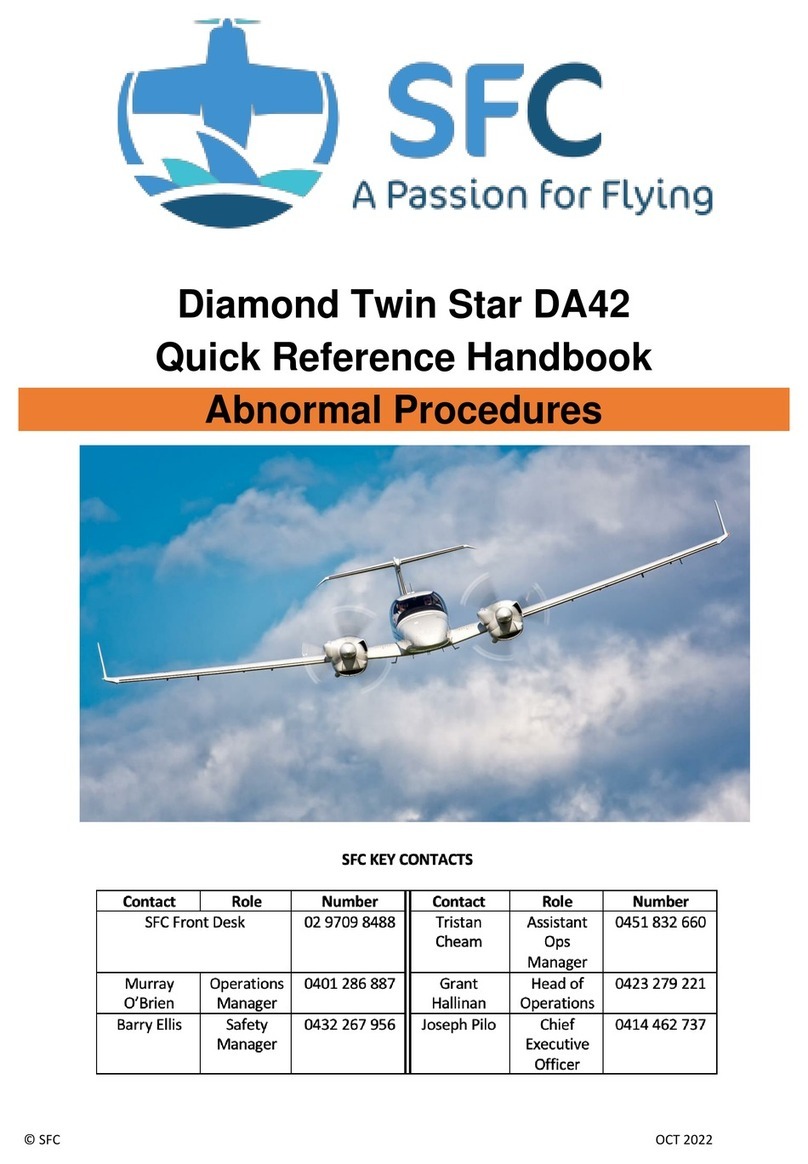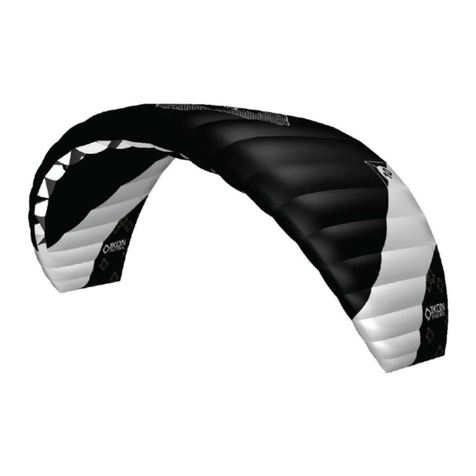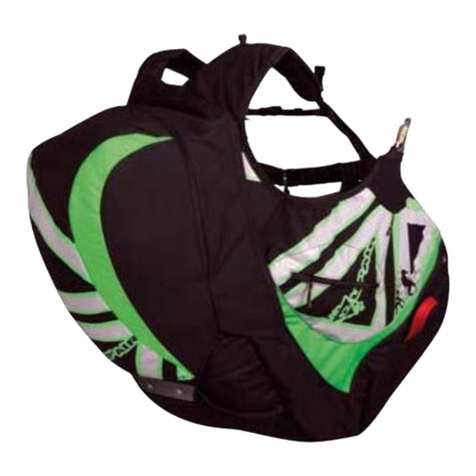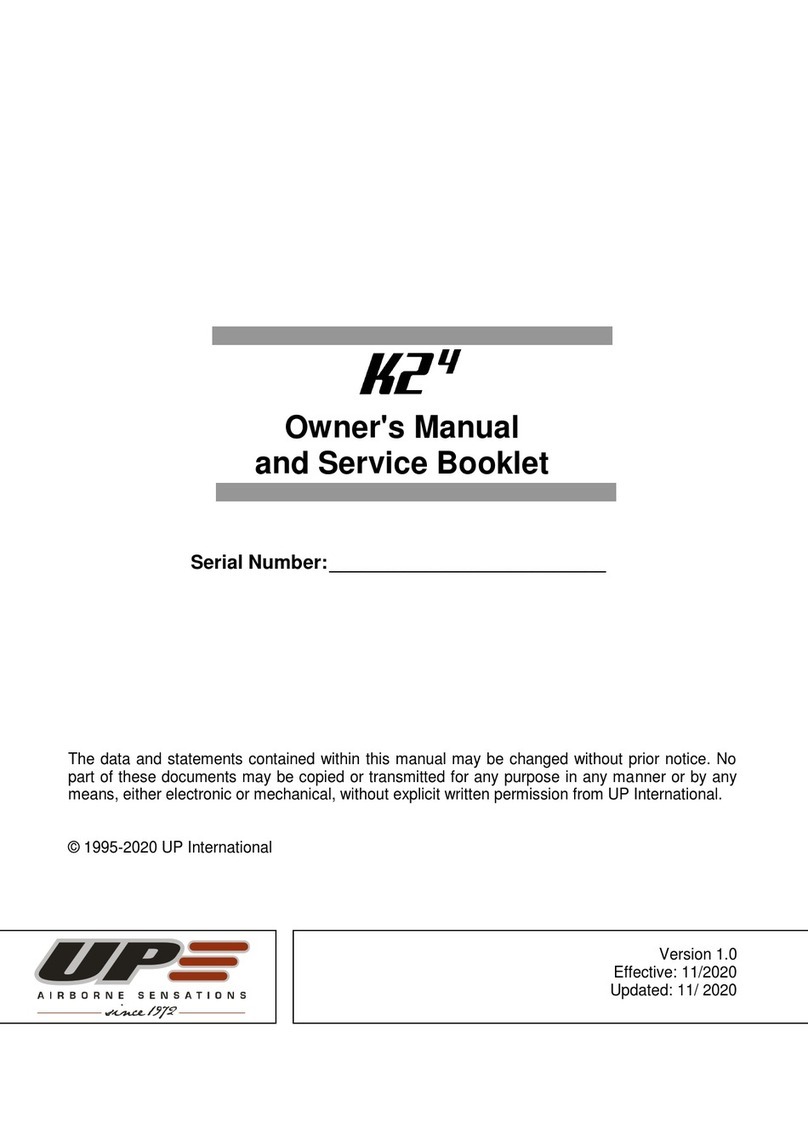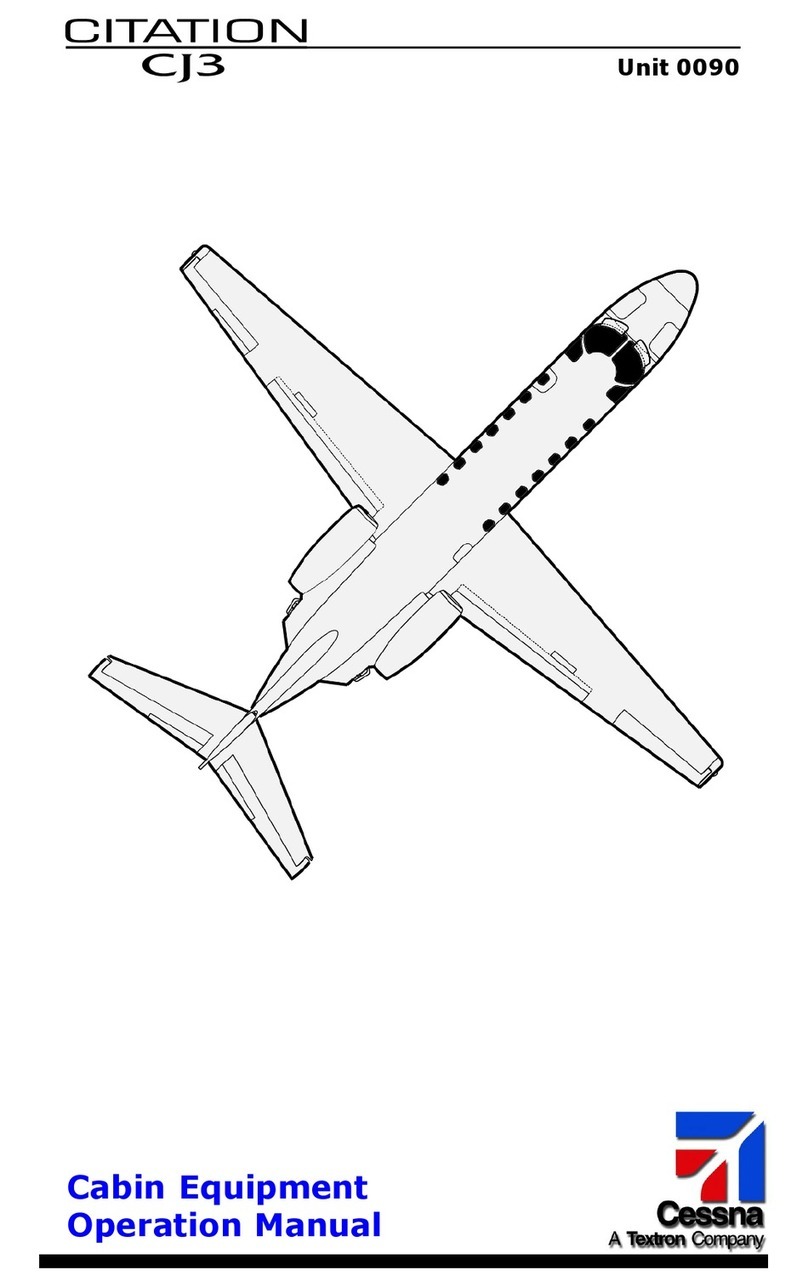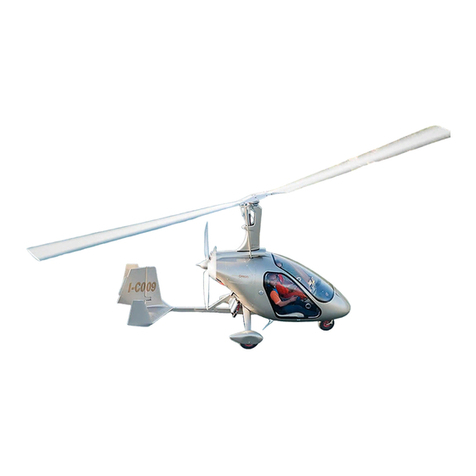SFC Cessna 182Q User manual

CESSNA 182Q QRH
Page 1of 33
C182Q QRH JAN 2022
Cessna 182Q
Quick Reference Handbook

CESSNA 182Q QRH
Page 2of 33
C182Q QRH JAN 2022
CESSNA 182Q
QUICK REFERENCE HANDBOOK. (QRH)
DISCLAMER: This publication is to be used as a quick reference handbook and is to
be read and used in conjunction with the aeroplane flight manual and standard
operating procedures. It does not replace or supersede the aeroplane flight manual.
It is the responsibility of the pilot in command to comply with all relevant
performance and documentation criteria relative to their flight operations.
QRH COLOUR INDEX Meaning
BLUE : - Memory Items/Flow Checks –Normal Procedures –Actions to
be completed without reference. (Have a grey background)
YELLOW : - Do List –Normal Checklists –To be read line by line.
RED :- Emergency Procedure –Actions to be completed from memory
and without reference. (Items with grey background are memory items)
GREEN :- Aircraft Type Information.
DEFINITIONS:
Land Immediately –The urgency of the landing is paramount. Emergency descent
normally required with a landing in an open field.
Land As Soon As Possible –Land without delay at the nearest suitable airfield at
which a safe approach and landing is assured.
Land As Soon As Practical –Landing at the discretion of the pilot. Extended flight
beyond the nearest approved landing area is not recommended.
Required Performance –In compliance with CASR, CAO 20.7.0, & CAO 20.7.4.

CESSNA 182Q QRH
Page 3of 33
C182Q QRH JAN 2022
QRH CONTENTS
Preliminary Checklist
4
PRE-MANOEUVRE (HASELL) Procedures
19
EXTERNAL PREFLIGHT INSPECTION Procedure
5
ENGINE & SYSTEMS
20-
23
PASSENGER BRIEFING Procedure
6
ENGINE FIRE START / GROUND Procedure
24
BEFORE START Checklist
6
ENGINE FIRE IN FLIGHT Procedure
24
NORMAL (COLD) START Procedures
7
ELECTRICAL SMOKE OR FIRE Procedure
25
HOT START Procedures
7
CABIN FIRE Procedure
25
FLOODED START Procedure
8
WING FIRE Procedure
25
NORMAL (EXTERNAL POWER) START Procedure
8
ENGINE FAILURE DURING TAKE OFF GROUND ROLL
Procedure
26
AFTER START Checklist
9
ENGINE FAILURE IMMEDIATELY AFTER TAKEOFF
(Below 300’)
26
TAXI Procedures
9
ENGINE FAILURE DURING FLIGHT
26
RUN UP Checklist
10
EMERGENCY LANDING –WITHOUT ENGINE POWER
27
RUN UP Procedures
11
PRECAUTIONARY LANDING –WITH ENGINE POWER
27
BEFORE TAKE OFF Checklist
12
DITCHING
28
PRE-DEPARTURE Briefing procedure
12
ALTERNATE STATIC AIR SOURCE Procedure
28
PRE-TAKEOFF SAFETY BRIEFING procedure
13
LANDING WITH A FLAT MAIN TYRE Procedure
28
LINE UP Procedures
13
LANDING WITH A FLAT NOSE TYRE Procedure
29
TAKE –OFF Procedures - NORMAL
13
EXCESSIVE FUEL VAPOUR
29
TAKE –OFF Procedures –Short Field
14
HIGH VOLTS >40 AMPS
29
NORMAL (CRUISE) CLIMB Procedures
14
LOW VOLTS <1000RPM
29
MAXIMUM PERFORMANCE CLIMB Procedures
14
AUTOPILOT or ELECTRIC TRIM FAILURE
30
AFTER TAKE OFF/CLIMB Checklist
14
HIGH CARBON MONOXIDE LEVEL ADVISORY
30
TOP OF CLIMB Checklist
15
SPIN RECOVERY Procedure
30
CLEAROFFS Procedures CRUISE CHECKLIST
15/16
POST LOSS OF CONTROL Procedure
31
COAL FLOW Procedures Before CRUISE
WAYPOINT/ TURN points
16
UNUSUAL ATTITUDE RECOVERY Procedure
31
Pre-Approach Checklist (As Required)
16
INADVERTANT FLIGHT INTO ICING Checklist
31-
32
TOP OF DESCENT Checklist (Prior to TOD Point)
16
BIRD STRIKE CHECKLIST Procedure
32
APPROACH (CAN) Checklist (As Required) (Prior to
arriving at IAF)
17
PRE-LANDING Procedures
17
FINAL APPROACH Procedures
17
BALKED LANDING Procedure
18
AFTER LANDING Procedure
18
PARKING AND SHUTDOWN Checklist
19
POST FLIGHT Checklist
19
EMERGENCY PASSENGER BRIEFING Procedures
19

CESSNA 182Q QRH
Page 4of 33
C182Q QRH JAN 2022
INADVERTANT FLIGHT INTO ICING Checklist
PRELIMINARY Checklist
1. Flight Authorisation …….………………………………………………… COMPLETE
2. Tie Downs/Chocks/Gust Locks ………………….…………REMOVE & STOW
3. Maintenance Release ……………….…… CHECKED, SIGNED & ONBOARD
4. Flight Manual & GNSS/GPS QRH ….…………….................... ON BOARD
5. Interior ……………………………………………………………………. CLEAN & TIDY
6. Windscreen ………………………………………………………………........... CLEAN
7. ELT …………………………………………………………………………………… ARMED
8. Heater / Demister …………………………………………………….………....... OFF
9. NAV Lights …………………………………….………………………………........... OFF
10. Throttle ……………………………………………………………………………. CLOSED
11. Propeller ………………………………………………………….…. PITCH FULL FINE
12. Mixture ……………………………………………………………………. IDLE CUT OFF
13. Carbon Monoxide Indicator ………………..……………………………….. VALID
14. Instrument Lights …………………………….……………………………………… OFF
15. Trims …………………………………………………….…………. SET FOR TAKE-OFF
16. Overhead Cabin Light …………………………………………………............. OFF
17. Master Switch …………………………………………………………………………. ON
18. Wing Flaps …………………………………......... FLAP DOWN & INSPECTED
19. External Lights …………………………………................................ CHECKED
20. Stall Warning ………………………………………………………. CONFIRM HORN
21. Pitot Heat …………………………………………………………..…… CHECK WARM
23. Wing Flaps ………………………………………………………………….. RETRACTED
24. Master Switch ………………………………………………………….…………….. OFF
25. Park Brake ……………………………………..………………………………..……… SET
26. Fuel Quantity ……………………………………………........... VISUALLY CHECK
27. Fuel Drains X 4 ……..…………………………………………………..…COMPLETE
28. Fuel Vents ………………………………….……………. CHECK UNOBSTRUCTED
29. Engine Oil ……..………… CHECK QUANTITIES / CAPS & DOORS SECURE
30. External Inspection ………………………………………………………. COMPLETE

CESSNA 182Q QRH
Page 5of 33
C182Q QRH JAN 2022
EXTERNAL PREFLIGHT INSPECTION Procedure–KEY FEATURES
(Expanded walk-around found in Cessna 182 POH Section 4)
1. Cabin
- Pilots Operating Handbook –Available in
aircraft
- Control wheel lock - Remove
- Ignition switch –OFF
- Avionics Power Switch –OFF
- Master Switch –ON
- Fuel quantity indicators –Check Quantity
-Flaps-40°
-Rotating Beacon- Checked
- Pitot Heat –ON and Checked
- Master Switch –Off
- Fuel Selector Valve –Both
- Trim controls –Neutral
- Static Pressure alternate source valve (if
installed) –Off
- Fire Extinguisher –CHECK
-Cowl Flaps-Open (VH-STA ONLY)
-Baggage Door- Checked for Security and
Locked
- Park Brake - ON
2. Empennage
- Rudder gust lock –Remove
- Tail tie down –Disconnect
- Control Surfaces –Check movement and
security
- Trim Tabs –Check Security
- Antennas –Check Security
3. Right wing trailing edge
- Aileron –Check movement and security
- Flap –Check Rollers
4. Right wing
- Wing tie down –Disconnect
- Fuel tank vent –Check for blockage
- Main wheel tyre –Check proper inflation
- Fuel drain - Check for water, sediment and
fuel grade
- Fuel quantity –Check visually with dipstick
- Fuel filler cap –Secure and vent
unobstructed
5. Nose
- Static vent (Both sides of fuselage) –Check
(verify opening is clear)
- Propeller and spinner –Check for nicks,
security and oil leaks
-Landing Light-Checked for Condition
- Engine cooling intakes & oil cooler –Check
clear
- Nose wheel tyre and strut –Check for proper
inflation
-Nose Tie-Down-Disconnected
- Engine oil level –Check and Secure (Greater
than 9quarts or fill to 12 quarts for extended
flight)
- Fuel drain strainer –Four second operation
to clear water and sediment (refer POH)
-Sample fuel in belly drain to check for water
and sediment
6. Left Wing
- Main wheel tyre –Check proper inflation
- Fuel drain - Check for water, sediment and
fuel grade
- Fuel quantity –check visually for desired
level
- Fuel filler cap –secure and vent
unobstructed
7. Left wing leading edge
- Pitot tube cover –Remove and check tube
for blockage
- Stall warning vane –Check movement and
horn operation with master switch on
- Wing tie down –disconnect
- Fuel tank vent –Check for blockage
8. Left wing trailing edge
- Aileron –Check movement and security
- Flap –Check Rollers

CESSNA 182Q QRH
Page 6of 33
C182Q QRH JAN 2022
BEFORE START Checklist
1. PAX Brief..............................................................COMPLETED
2. Pre-flight Inspection ........................................... COMPLETED
3. Flt Mnl & Maint Release.................. COMPLETE & ONBOARD
4. W&B, TO & Landing charts.............. COMPLETE & ONBOARD
5. Seats, Belts, Shoulder Harness……… LOCK, FASTEN & ADJUST
6. Fuel Selector.................................................................. BOTH
7. Cowl Flaps ……………………………………….. OPEN (VH-STA ONLY)
8. Alternate Static ................................................................ OFF
9. Flight Instruments ….…………………….………………. CHECK GLASS
FOR CONDENSATION
10. Radios & Electrical Equipment ……….................................OFF
11. Nav Light.............................................................................ON
12. Beacon …………………........................................................... ON
13. Circuit Breakers ....................................................... CHECK IN
14. Park Brake ............................................................ TEST & SET
15. Trim Tabs........................................................... SET NEUTRAL
16. Engine Fire Before Start Brief..............................COMPLETED
CONDUCT START PROCEDURE (COLD, HOT, FLOODED or
EXTERNAL POWER)
PASSENGER BRIEFING Procedure
Discuss
o Location of Entry & Exit Points of the aeroplane for normal and
emergency operations.
o How to Open and Close Main Door
o Seat Adjustment
o Seat Belt Usage
o Stowage of Loose Items
o Environmental Considerations
o Remain Clear of Flight Controls
o Emergency Equipment & How to Use (Fire extinguisher etc)
o No Smoking Policy
o Flight Details (i.e. ETA Destination, Basic Route Details etc)

CESSNA 182Q QRH
Page 7of 33
C182Q QRH JAN 2022
NORMAL (COLD) START Procedures
1. Mixture ………………………………………………………………….…………… Full RICH
2. Propeller………………………………………………….…………………………HIGH RPM
3. Carburettor Heat……………………………………………….………………….…….OFF
4. Throttle………………………………………………………………………….OPEN ½ INCH
5. Master Switch (BATT & ALT) ………………………………………………………. ON
6. Propeller Area ………………………….………………………………………..…. CLEAR
7. Magnetos Switch ……………….…………………………………………………. START
IF ENGINE DOES NOT START WITHIN 30 SECONDS, DISENGAGE THE
STARTER, PRIME THE ENGINE AND THEN REPEAT THE START
PROCEDURE
WHEN or AFTER ENGINE STARTS AND RUNNING
8. Throttle …….……………………………………………………………… SET 1000 RPM
9. Oil Pressure (UP WITHIN 30 SEC) …………………………………………. CHECK
CAUTION:- DO NOT PUMP THROTTLES DURING START
HOT START Procedures
1. Mixture………………………………………………………………………………….Full Rich
2. Propellor……………………………………………………………….…………….High RPM
3. Carburettor Heat…………………………………………..……………………………..OFF
4. Throttle………………………………………………………………………..OPEN ½ INCH
5. Master Switch (BATT & ALT)………………..……………………………………….ON
6. Propeller Area………………………………………………………………..……….CLEAR
7. Magnetos Switch…………………………………………………………………….START
IF ENGINE DOES NOT START WITHIN 30 SECONDS, DISENGAGE THE
STARTER, PRIME THE ENGINE AND THEN REPEAT THE START
PROCEDURE
WHEN or AFTER ENGINE STARTS AND RUNNING
8. Throttle……………………………………..……………………………….SET 1000 RPM
9. Oil Pressure (UP WITHIN 30 SEC)…………………………………….………CHECK
CAUTION:- DO NOT PUMP THROTTLES DURING START

CESSNA 182Q QRH
Page 8of 33
C182Q QRH JAN 2022
FLOODED START Procedures
1. Throttle ……………………………………………….……………………. ¼ TO ½ OPEN
2. Propeller …………………………………………………………………….…… HIGH RPM
3. Mixture …………………………………………………….……………………….……… IDLE
4. Propeller Area ………………………….………………………………………..…. CLEAR
5. Master Switch (BATT & ALT) ………………………………………………………. ON
6. Magnetos Switch ……………….…………………………………………………. START
7. Mixture ……………………………..………. Advance smoothly to RICH (when
engine starts)
8. Throttle ……………………………….…………………………………………….. RETARD
WHEN or AFTER ENGINE STARTS AND RUNNING
9. Throttle …….……………………………………………………………… SET 1000 RPM
10. Oil Pressure (UP WITHIN 30 SEC) …………………………………………. CHECK
11. AMPS……………………………………………………………….……. CHECK POSITIVE
CAUTION:- DO NOT PUMP THROTTLES DURING START
NORMAL START Procedures (EXTERNAL POWER)
1. Throttle ……………………………………………….……………..……. 1/4 INCH OPEN
2. Propeller ………………………………………………………………..………… HIGH RPM
3. Mixture …………………………………………………….……………………….……… IDLE
4. Propeller Area ………………………….………………………………………..…. CLEAR
5. Master Switch (BATT & ALT) ………………………………………………….…. OFF
6.. AVIONICS SWITCH ……………………………………………………..…………….. OFF
7. External Power ……………………………………………………………….. CONNECT
8. Master Switch (BATT & ALT) ………………………………………………………. ON
9. Mixture ……………………………………………… Full RICH (until stable fuel
flow, then set to IDLE)
10. Magnetos Switch ……………….…………………………………………………. START
11. Mixture ……………………………..………. Advance smoothly to RICH (when
engine starts)
12. Oil Pressure (UP WITHIN 30 SEC) …………………………………………. CHECK
13. Throttle ……………………………………………………………….. REDUCE TO IDLE
14. External Power…….…………………………… DISCONNECT (Latch the door)
15. Throttle ………………….. INCREASE TO 1500 RPM (for several minutes)
16. AMPS ……………………………….…………………………………… CHECK POSITIVE
17. INTERNAL POWER
a) ALT …………………………………………………………………..…………. OFF
b) TAXI & LDG LIGHTS …………………………………………..………….. ON
c) Throttle ……………………………………………………………………… IDLE

CESSNA 182Q QRH
Page 9of 33
C182Q QRH JAN 2022
CAUTION: DO NOT PUMP THROTTLES DURING START
TAXI Procedures
1. Brakes ………………………………………………………………………………. CHECKED
2. Steering …………………………………………………………………….……... CHECKED
3. Flight Instruments …… TC, SKID BALL, AI, DI, COMPASS ….… CHECKED
RIGHT TURN –NUMBERS INCREASING –BALL SLIDES LEFT
LEFT TURN –NUMBERS DECREASING –BALL SLIDES RIGHT
4. Navaids ……………………. IDENT & TRACKING …………………...… CHECKED
5. ATC Taxi / Airways Clearance …………………………….. OBTAIN If required
AFTER START Checklist
1. Power …..……………….…………………………………….……..… 1000RPM Check
2. Oil Pressure (Rising < 30 Seconds) …………..…………..….………… CHECKED
3. Ammeter ...................................................................... POSITIVE LOAD
4. Avionics
5. Transponder ……………………………………..….................................GROUND
6. Taxi Light …………………………………………………………………………………….. ON
7. Flaps ……………………………………………………………..………… CONFIRMED UP
8. Vacuum gauge .................................................................. INDICATING
9. Mixture .........................................................................................LEAN
10. Taxi Route & ATIS/AWIS ........................................................BRIEFED
11. Parking Brake ......................................................................RELEASED
NOTE: In extremely cold weather OIL PRESSURE may take up to 60
seconds to show pressure

CESSNA 182Q QRH
Page 10 of 33
C182Q QRH JAN 2022
RUN UP Checklist
1. Park Brake ……………………………………………………….…………………….…… SET
2. Throttle ……………………………………………………….………………..….. 1000RPM
3. Mixture ……………………………………………………..……………………… FULL RICH
4. Oil Pressure …………………………………………….………..……… GREEN SECTOR
5. Fuel Tank ……………………………….……………….………………. CONFIRM BOTH
6. Cowl Flaps …………………………………………..… CONFIRM OPEN (STA ONLY)
--- CONDUCT RUNUP PROCEDURE ---
7. Engine Instruments….............................................................. CHECKED
8. Vacuum Pressure Indicator …..................................... CHECKED GREEN
9. Magnetos…........................................... CHECKED-MAX DROP 150 RPM,
MAX DIFF 50 RPM
10. Carburettor Heat ……………………………………………………………… CHECKED
11. Propeller ……….…………….…………………………………………………… CHECKED
12. Ammeter…............................................................................ CHECKED
13. Air Conditioner (if installed) ….............................................. CHECKED
14. Carbon Monoxide Indicator …………………………………..…………. CHECKED
15. Slow Idle ……………………………………………………………..…………… CHECKED

CESSNA 182Q QRH
Page 11 of 33
C182Q QRH JAN 2022
RUN UP Procedures
----AEROPLANE POSITIONED CLEAR BEHIND----
1. Brakes ………………………………………………………………………………… HOLD
2. Throttle …………………………………………………………………….…1700 RPM
CONFIRM AEROPLANE NOT MOVING
3. Engine Instruments ………………………………………………………… CHECKED
4. Vacuum Pressure Indicator ………………………………… CHECK IN GREEN
5. Magnetos …………………………………… CHECK LEFT/BOTH/RIGHT/BOTH
(MAX DROP 150RPM & MAX DIFF 50RPM)
6. Carburettor Heat ..………………………… CHECK (MAX DROP OF 75RPM)
7. Propeller ………………….…………….……… EXERCISE HIGH TO LOW RPM
Return to HIGH RPM (FULL FORWARD)
8. Ammeter ………………….…………………………………..………………….. CHECK
9. Air Conditioner (if Installed) …………………………………………… CHECKED
10. Carbon Monoxide Indicator …………………..…… NO COLOUR CHANGE
11. Throttle ………………………………….…………………………CHECK SLOW IDLE
12. Throttle …………………………………………………………………. SET 1000 RPM
CAUTION: OPERATION ON ONE MAGNETO SHOULD NOT EXCEED 5 –10 SECS
NOTE: During Night & IFR flights proper verification of the alternator and
Alternator control unit operation is essential. This can be verified by loading
the electrical system momentarily (3-5 Secs) with the landing light during
engine runup (at 1700RPM). The ammeter will remain within one needle width
of its original position with the Alternator and Alternator control unit operating
properly

CESSNA 182Q QRH
Page 12 of 33
C182Q QRH JAN 2022
PRE-DEPARTURE Briefing procedure
oAirport, ATIS/AWIS & TAF Info ............................................. REVIEW
oSignificant Environmental Factors........................................ DISCUSS
oA/C Take-Off Data & Speeds ................................................ REVIEW
oNormal Departure Procedure .............................................. REVIEW
oClimb Schedule ………..………………………………………………. CONSIDERED
BEFORE TAKE OFF Checklist
1. Fuel Selector ............................................................ CONFIRM BOTH
2. Fuel Contents................ SUFFICIENT & CROSSCHECKED with gauges
3. Engine Instruments .................................................. GREEN SECTOR
4. Flight Instruments………………………………………........... SET & CHECKED
5. Battery Master Switch & ALTR Switch ............................. VERIFY ON
6. Magnetos ..................................................................... VERIFY BOTH
7. Circuit Breakers .................................................................. CHECK IN
8. Pitch …………………………………………………..……. HIGH (FULL FORWARD)
9. Mixture ............................. RICH (Above 5000ft, lean for MAX RPM)
10. Cowl Flaps ……………………………………………….…. SET OPEN (STA ONLY)
11. Elevator Trim & Rudder Trim ............................... SET FOR TAKEOFF
12. Flaps……................................ SET FOR TAKEOFF (20˚ For Short field)
13. Radios........................................................................................... SET
14. GPS & Navaids.......................................................... SET & CHECKED
15. Auto Pilot (if installed) ……………............................................ TESTED
16. Electric Trim ………………………………………………….… CHECK & NEUTRAL
17. Throttle Friction Lock............................................................ ADJUST
18. Flight Controls ......................................... FULL, FREE AND CORRECT
19. Air Conditioner (if installed) ....................................................... OFF
20. Cabin Power 12V Switch (if installed) .………………………………………OFF
21. Seats................................ ADJUSTED, ERECT & LOCKED IN POSITION
22. Empty seats................................... SEAT BELTS SECURELY FASTENED
23. Harnesses ........................................................ FASTENED & SECURE
24. Cabin Doors & Windows ............................... CLOSED AND LATCHED
25. Clearance …………………………………………………..………………… OBTAINED
26. Transponder ………………………………………………………… CONFIRM CODE
27. Departure Brief............................................................. CONDUCTED
28. Pre-Take-off Safety Briefing.......................................... CONDUCTED
29. Park Brake............................................................................ RELEASE

CESSNA 182Q QRH
Page 13 of 33
C182Q QRH JAN 2022
LINE UP Procedures
1. Lights ........................................................................... AS REQUIRED
2. Transponder........................................................ CODE AND ALT SET
3. Pitot Heat..................................................................... AS REQUIRED
4. Wind Sock........................................................................... CHECKED
5. DI/Compass...................................................... ALIGNED & CHECKED
TAKE –OFF Procedures - NORMAL
1. Wing Flaps ………………….…….….…. CONFIRM SET 0 - 20˚ (10˚Preferred)
2. Brakes ……………………………………………………………………………………… HOLD
3. Power ………………………………………………... FULL THROTTLE & 2400 RPM
4. Mixture ……………….……… LEAN FOR ELEVATION (RICH BELOW 5000FT)
5. Engine Instruments …………………………………………………..……....…. GREEN
6. Airspeed Indicator ……………………………................. ALIVE & INCREASING
7. Rotate ………………………………………………………………………….…. 50-60 KIAS
8. Climb Speed ……………………………………….……………….. 70 KIAS (Flaps 20˚)
80 KIAS (Flaps Up)
9. Wing Flaps (300ft) ……………………………………………....………... SELECT UP
10. Climb Power & Speed…………………………………………. SET AS REQUIRED
CLB PWR set @ 300ft for Circuits, @1000ft in VMC, @LSALT/MSA in IMC
PRE-TAKEOFF SAFETY BRIEFING
oIf I encounter an abnormal situation or an undesired aircraft state
on the runway I will; close the throttle and apply braking as
required to stop in a straight line.
oIf the engine fails after take-off with runway remaining I will; close
the throttle, lower the nose and land on the available surface in a
straight line.
oIf the engine fails with no runway remaining below 300ft I will;
close the throttle, lower the nose, select a field within 30 degrees
either side of the nose, confirm glide speed of 70 KIAS if the flaps
are retracted, 65 KIAS if not retracted, and if time permits, carry
out the engine failure immediately after take-off procedure.
oIf the engine fails above 300ft I will lower the nose, choose a field
within 60 degrees either side of the nose, confirm the glide speed
and if time permits, attempt to restart the engine with restart
checks.
oI will only consider turning back to the runway if the aeroplane is
at or above 1000ft or established on downwind.
oDiscuss Roles

CESSNA 182Q QRH
Page 14 of 33
C182Q QRH JAN 2022
TAKE –OFF Procedures –Short Field
1. Wing Flaps ………………………….………………………….…….. CONFIRM SET 20°
2. Brakes …………………………………………………………………………………... APPLY
3. Power ……………………………………….………... FULL THROTTLE & 2400 RPM
4. Mixture …………………….… LEAN FOR ELEVATION (RICH BELOW 5000FT)
5. Engine Instruments …………………………………………………..……....…. GREEN
6. Brakes …………………………………………………………………………………. RELEASE
7. Airspeed Indicator ……………………………................. ALIVE & INCREASING
8. Elevator ………………………………………..…… SLIGHTLY TAIL LOW ATTITUDE
9. Climb Speed (Until all obstacles cleared) ……………………..……….. 57 KIAS
10. Climb Speed (After all obstacles cleared) …………...……..……….. 70 KIAS
11. Wing Flaps (>70kts) ………………………….…………….…………..... SELECT UP
12. Climb Power & Speed…………………………….……………. SET AS REQUIRED
CLB PWR set @ 300ft for Circuits and in VMC, @LSALT/MSA in IMC
NOTE: DO NOT REDUCE POWER UNTIL WING FLAPS RETRACTED
NORMAL (CRUISE) CLIMB Procedures
1. Airspeed ………………………………….……………………………………. 85 –95 KIAS
2. Power ………………………………….…………………………………..… 23 INCHES HG
3. Propeller ……………………………………………….…………………….…… 2400 RPM
4. Cowl Flaps ……………………….…………………………………… OPEN as required
5. Fuel Selector ………………………………………………………………………….. BOTH
6. Mixture …………………………………….…… 15 GPH or FULL RICH (< 5000 FT)
MAXIMUM PERFORMANCE CLIMB Procedures
1. Airspeed ………………………………….………………………..………… 78 KIAS @ SL
72 KIAS @ 10000 FT
2. Power ……………………………….…………………………..………… FULL THROTTLE
3. Propeller ……………………………………………….…………………….…… 2400 RPM
4. Fuel Selectors ………………………………………………………………..………… BOTH
5. Mixture ……………………………….…..…… FULL RICH unless engine is rough
6. Cowl Flaps ……………………….……………………………………………..……… OPEN
AFTER TAKE OFF/CLIMB Checklist
1. Flaps ……………………………………………………………….…………… UP AT 300 FT
2. Climb Power ………………………………………………………………………..…….. SET
3. Mixtures…………………………………………………………..… LEAN AS REQUIRED
4. Engine Temperatures……………………………………………………….. MONITOR
5. Cowl Flaps ……… CLOSED AS REQUIRED (2/3RD CYLINDER HEAD TEMP)

CESSNA 182Q QRH
Page 15 of 33
C182Q QRH JAN 2022
TOP OF CLIMB Checklist
1. Landing Light ……………………………………………….………………………….… OFF
2. Power ….……………………………………………………….……… SET AS REQUIRED
3. Mixture ………………………………………………………….…………………….…. LEAN
4. Engine Instruments …………………………………………………..………. CHECKED
5. Cowl Flaps .…….. CLOSED AS REQUIRED (2/3RD CYLINDER HEAD TEMP)
VH-STA ONLY
6. CLEAROFFS Checks ………………………………….… COMPLETE AS REQUIRED
CLEAROFFS Procedures CRUISE CHECKLIST
C. COMPASS
* Aligned / Synchronised / Slaved
* Read the CDI & HDG bug settings and check them against
the paper flight plan
* HSI checked no flag
L. LOG
* Update ETA for next reporting point / waypoint only
* Log fuel
E. ENGINE
* Confirm correct power settings and engine leaned
* Check Engine Gauges –Temps, Pressures, Suction, Amps, Volts
* Cowl Flaps --- Checked
A. ALTITUDE
* Correct QNH set
* Is it above MSA/LSALT, CTA + 500, Restricted Areas, 500ft AGL
1000ft Populated Area.
* Is it the planned altitude?
* Is it the correct hemispherical altitude?
* Is it below the maximum altitude (Freezing level, ATC step etc)
R. RADIO
* Is this frequency correct?
* Do I have any conflicting / relevant traffic
* Select / setup next radio frequencies
* TITSSO navaids for this leg
* HSI checked no flag
O. ORIENTATION
* Is the flight track I have just flown where I should be,
and is it relative to my planned track & orientation?
* What airspace is on this leg –how will I avoid or transit it?
* What alternate / diversion airports on this leg & when/where
is the next closest.

CESSNA 182Q QRH
Page 16 of 33
C182Q QRH JAN 2022
F. FUEL
* Fuel Quantity checked, Fuel logged
* Aux Fuel Pumps as required
* Mixtures leaned
F. FORCED LANDING
* Brief scan of the ground for emergency landing sites
S. SARTIME
* Check SARTIME for expiry, amend if required
Pre-Approach Checklist (As Required)
1. IFR SARWATCH OCTA / VFR SARTIME ... CONSIDER WHEN TO CANCEL
2. Radios …………………………………………………………………………...………….. SET
3. Descent ………….…………………………………………………………… CALCULATED
4. IAL Plate Brief (IFR only).…………………………………………….…. COMPLETED
5. Departure/Emergency Procedure ………… PERFORMANCE & TRACKING
6. Fuel for an Alternate …………………………………………….……… CONSIDERED
7. Outbound Track, LSALT, Altitude ……………………………………… REVIEWED
8. Airwork Call …………………………………………………………………….……… MADE
TOP OF DESCENT Checklist (Prior to TOD Point)
1. Altimeter …………………………………………………………………….…….. QNH SET
2. Power ………………………………….………………..………………..… AS REQUIRED
3. Mixture ………………..…Lean for smoothness in power descents. Use
full rich mixture for idle power
4. Cowl Flaps ………………………………………….………………. CLOSED STA ONLY
5. Fuel Selector ………………………………………………………………………….. BOTH
AVOID PROLONGED IDLE TO PREVENT LARGE CHANGE IN CHT

CESSNA 182Q QRH
Page 17 of 33
C182Q QRH JAN 2022
APPROACH (CAN) Checklist (As Required) (Prior to arriving at IAF)
1. Compass …..…………………………… ALIGNED / SYNCHRONISED / SLAVED
2. Altimeter (ATIS / AWIS Received) ………………..…………………… QNH SET
3. Nav Aids (As Required) …………………………………….……………….….. TITSO
* HSI CDI SOURCE (GPS or VLOC) ……….……..………………..…… SELECTED
* OBS FUNCTION ………………………………………………………… CONSIDERED
* RNAV RAIM INTEGRITY …………….……………………………………. CHECKED
* ILS MARKER ……………………………………………………. TESTED, AUDIO ON
* NAV FLAGS & IDENT ………………………………………………..…….. CHECKED
PRE-LANDING Procedures
1. Brakes ……………………………………………..…..… PRESSURE CHECKED & OFF
2. Undercarriage…………………………………………………………….……..….… FIXED
3. Mixture …………………………………………………………….. RICH (Below 5000ft)
4. Fuel Contents ………………………………………………………….……… SUFFICIENT
5. Fuel Selector …………………………………………………………………………… BOTH
6. Instruments …………………………………………..…………….…… GREEN SECTOR
7. Switches / Lights ………………………………………………………………..…..…… ON
8. Switches Autopilot (If Installed) ……………………………….………..………. OFF
9. Hatches, Harness, Seats ........................... SECURE, Fastened, Adjusted
10. Cowl Flaps ……………………………….…………..……………….….. AS REQUIRED
11. Cabin Power 12V Switch (If Installed) ……………………………………….. OFF
FINAL APPROACH Procedures
1. Propeller (P) …………………………………..…………….………………….. HIGH RPM
2. Undercarriage (U) …………………………………………….…….…………….. FIXED
3. Wing Flaps (F) ……………………………………………………..…..…………………. SET
4. Cowl Flaps (F) ……..………………………………..…………..……. OPEN (STA only)
5. Clearance (C) ……………………………………………………………………. OBTAINED
6. Wind Sock ………………………………………………………………………….. CHECKED

CESSNA 182Q QRH
Page 18 of 33
C182Q QRH JAN 2022
BALKED LANDING Procedures
1. Propeller ……………………………….………………………………….……… 2400 RPM
2. Throttle ……………………………………….…………….………….. FULL FORWARD
3. Wing Flaps …….…………………………………..…WHEN SAFE RETRACT to 20°
4. Airspeed ………………………………………………………………………..……. 55 KIAS
5. Wing Flaps …….…………………………… WHEN >70 KIAS RETRACT SLOWLY
6. Airspeed ………………………………………………………………………………. 70 KIAS
7. Cowl Flaps ……………………………………………………………………………... OPEN
AFTER LANDING Procedures
1. Taxi Clearance ……………………………………………….…………………. OBTAINED
2. Wing Flaps ………………………………………………….………..… IDENTIFIED & UP
3. Landing Light …..…………………….……………………………………………..……. OFF
4. Transponder ……………………………………….…………….…… GND or STANDBY
5. Pitot Heat ……………………………………….…….……………………………………. OFF
6. Propeller …………………….……………….…………………………………… HIGH RPM
7. Mixtures ………………………………………………….………………………….….…… SET
8. Cowl Flaps ……………………..…………….………….……... OPEN (VH-STA ONLY)
9. Elevator Trim …………………………………….………………………….…... NEUTRAL
10. IFR SARWATCH OCTA …………………………………………….....…. CANCELLED
PARKING AND SHUTDOWN Procedure
1. Parking Brake …………………………………………….………….……………..…….. SET
2. Throttle ……………………………………..……………….……..…………..……….… IDLE
3. Avionics…………………………………………………………….…..…….………….…. OFF
4. Magneto Switch ...……….…………………………….……….…. DEAD CUT CHECK
5. Mixture ………………………..………………………….………………..… IDLE CUT OFF
6. Magneto Switch ……………………………………………….………………………... OFF
7. Master Switch ………………………………………………………………………….… OFF
8. All Switches ………………………………………………….……………………..……… OFF
9. Fuel Selector Valve ……………..…………..……………………………………….RIGHT

CESSNA 182Q QRH
Page 19 of 33
C182Q QRH JAN 2022
AFTER SHUTDOWN
POST FLIGHT Checklist
1. Mixture, Magnetos, Master Switch ………………………………………….... OFF
2. Fuel Selector…………………………………………………………………. RIGHT TANK
3. Seats ………………………………………………………………………………… FULLY AFT
4. Flight Record ………………………………………………………………... COMPLETED
5. Cabin ……………………………………………..… CLEANED / RUBBISH REMOVED
6. Control Lock ……………….……………….………………….……………….…. INSTALL
7. Seat Belts ……………………………………………………………………………….…. TIDY
8. Throttle Lock ………………………………………………………………………..…….. ON
9. Wheel Chocks ………………………………………………………………………… FITTED
10. Park Brake ….………………….………………………………………………………… OFF
11. Aircraft Doors & Hatches ….……………….…….……… CLOSED & SECURED
12. Windscreen ……………………………………………………………………… CLEANED
13. Fuel Tanks …………………………………………………………….….. QTY CHECKED
14. Pitot Cover ………………………………………………………………………………… ON
15. Canopy Cover ………………………………………………………………………. FITTED
16. Tie Downs ………………………………………………………………………..… SECURE
17. IFR SARWATCH OCTA / VFR SARTIME ………………………..…. CANCELLED
EMERGENCY PASSENGER BRIEFING Procedures
We have had an emergency; we will be landing at ……………………………
Remove all sharp objects, dentures & glasses. Store all loose items.
Your exit is …………… When instructed open door and assume the brace
position. We will assemble behind and well clear of the aeroplane after
landing.
PRE-MANOEUVRE (HASELL) Procedures
1. Height ……………………………………………… SUFFICIENT FOR MANOUEVRES
2. Airframe …….……………………………..…….…….. CONFIGERED AS REQUIRED
3. Security …………………………………..……………………………..…. ITEMS SECURE
4. Engine ……………………………………………..………….…. T&P’s GREEN SECTOR
5. Location ……………………………………………………………………………. SUITABLE
6. Lookout …………………………………………………………………….…. AREA CLEAR

CESSNA 182Q QRH
Page 20 of 33
C182Q QRH JAN 2022
ENGINE & SYSTEMS
1. POWER PLANT
Engine Type ……………………………….……….… Teledyne Continental O-470-U
Max Power / Take-off Power …………………......…. 230/270HP @ 2400RPM
2. FUEL SYSTEM & SPECIFICATIONS
Minimum Grade …………………………. AVGAS 100 (Green) or 100 LL (Blue)
Standard Tanks …………………….……….. TOTAL CAPACITY: 82 USG / 312 LTS
USABLE CAPACITY: 79 USG / 300 LTS
3. PROPELLER
Propeller Manufacturer ………………………………………………………. MacCauley
Type ………………………………………………………………….. Clockwise / CSU (Left)
Number of Blades ……………………………………………………..……………….. Three
Diameter ………………………………………………………..……… Max 82” Min 80.5”
4. OIL SYSTEM & SPECIFICATIONS
Oil Capacity ………………………………..…………………………………………. Min: 9 Q
Max 12 Q
Oil Grade ……………………………………….…….…….……….. SAE-60 (Above 27° C)
SAE-50 (Above 16° C)
SAE –40 (-1° C to 32° C)
Oil Temp / Green Arc / Normal …………………………..…………. 100° F –240° F
Oil Temp / Red Line / Max ………………………………………………..………… 240˚F
Oil Press / Green Arc / Normal …………………..………….….…… 30 PSI –60 PSI
Oil Press / Red Line / Max ………………………………………………10 PSI - 100 PSI
Cylinder Head Temp / Green Arc / Normal …………..……..… 200° F –460° F
Cylinder Head Temp / Red Line / Max ………………………………………… 460° F
5. ELECTRICAL SYSTEM
12 Volt System ………………………..… Alternator ……... 28 Volt & 60 Ampere
Battery ……………………………….… 24 Volt
6. SUCTION / VACUUM RANGE
Normal Operating Range ……………………………..…………………….. 4.5”to 5.4”
7. UNDERCARRIAGE
Main Gear Wheels ………………………..………………………….. 42 PSI INFLATION
Nose Gear Strut……….….………..Air Oleo (55-60 PSI) –Adequate Extension
Nose Gear Wheel …………………………..…………………………. 49 PSI INFLATION
Table of contents
Other SFC Aircraft manuals
Popular Aircraft manuals by other brands

Pelegrin
Pelegrin Tarragon Pilot's operating handbook and flight manual

SKY PARAGLIDERS
SKY PARAGLIDERS GII 2010 manual

Forced Aeromotive Technologies
Forced Aeromotive Technologies FAA-STC SA10232SC instructions
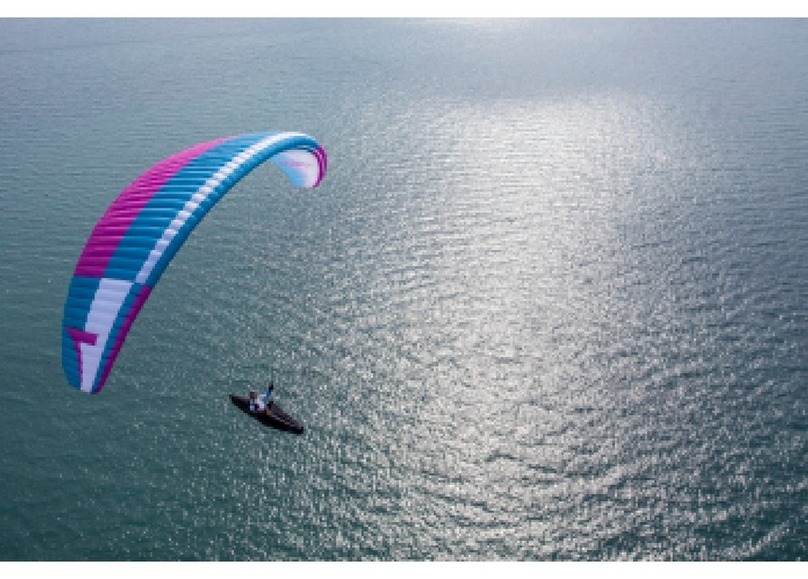
Triple Seven
Triple Seven ROOK2 user manual

APCO Aviation
APCO Aviation NRG Pro II manual
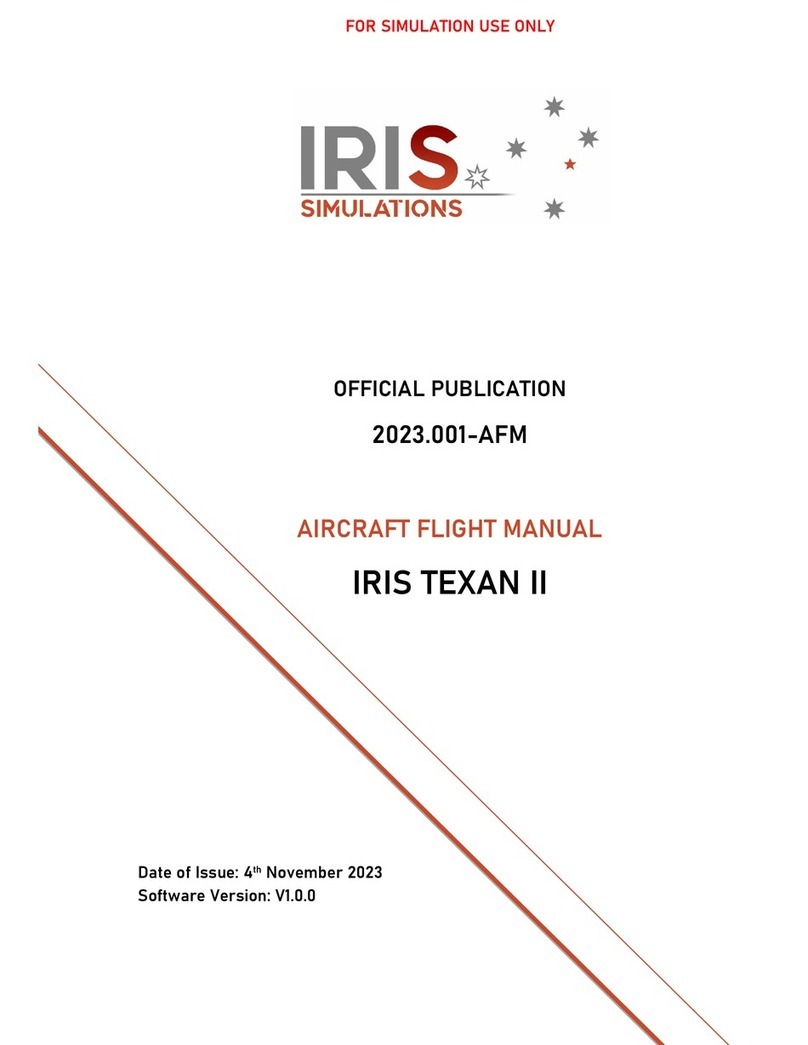
IRIS
IRIS TEXAN II Flight manual
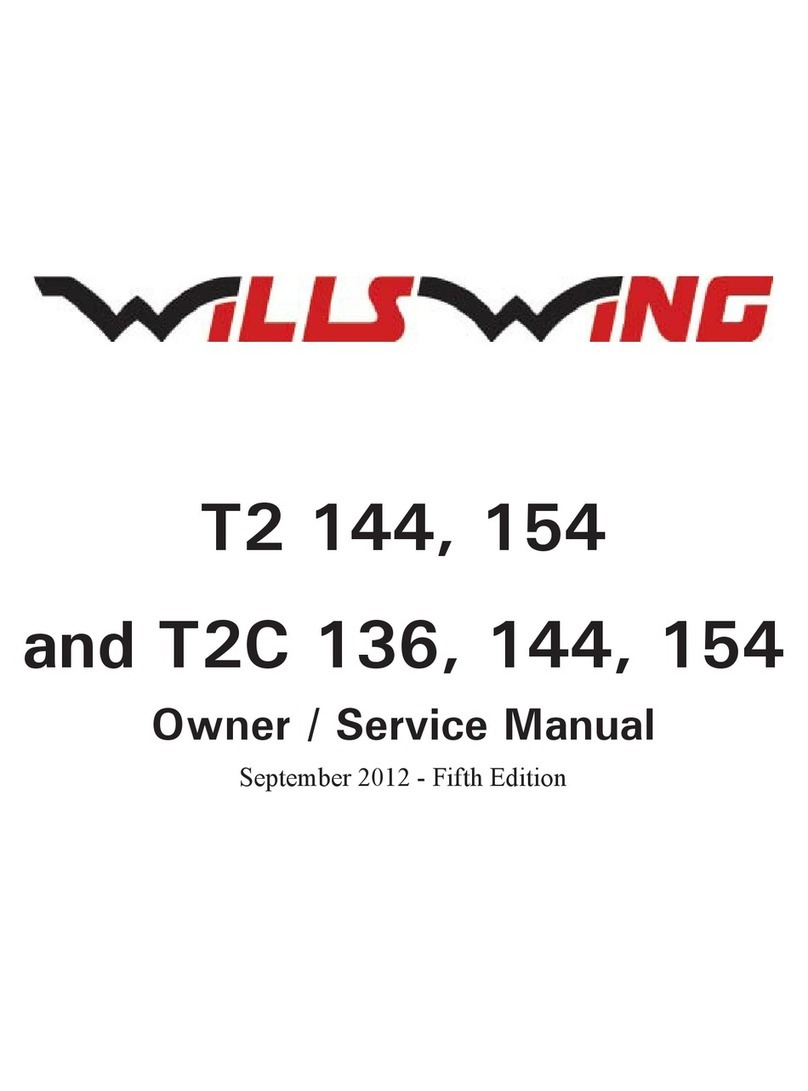
Wills Wing
Wills Wing T2 144 Owner's service manual

Diamond Aircraft
Diamond Aircraft DV 20 E 2022 Airplane Maintenance Manual
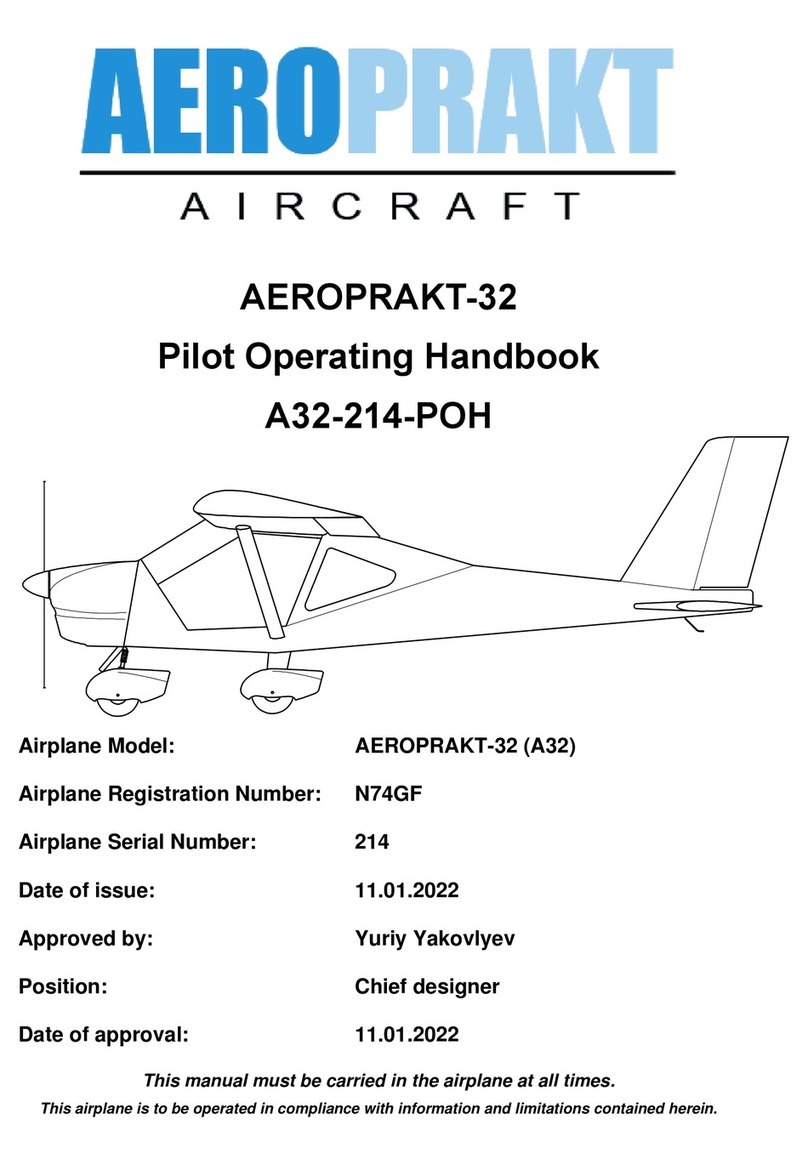
AEROPRAKT
AEROPRAKT A32-214-POH Pilot operating handbook
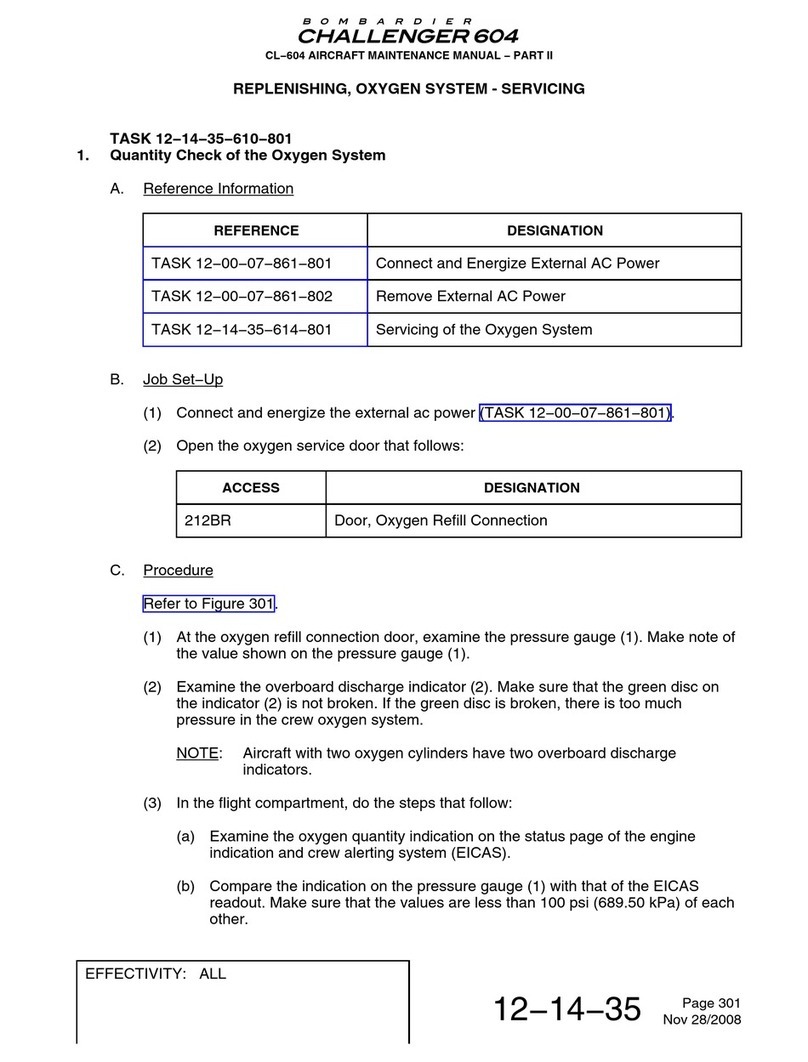
BOMBARDIER
BOMBARDIER CHALLENGER 604 Maintenance manual
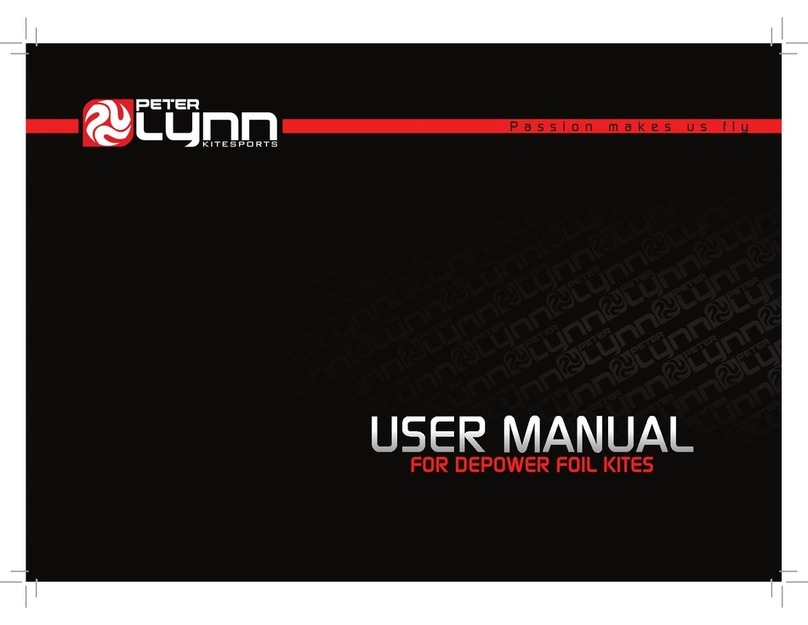
Peter Lynn
Peter Lynn Lynx user manual

Niviuk
Niviuk Arktik user manual
